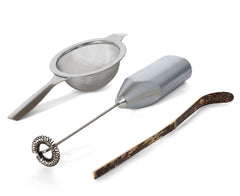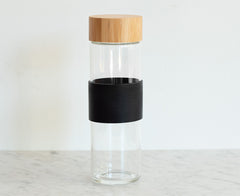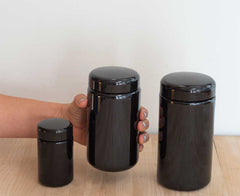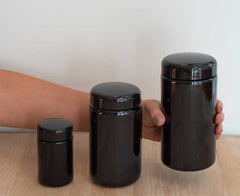Matcha is one of those beverages that invites lingering of all sorts.
If it’s good, the taste lingers on the palate for 30, 60, even 120 seconds and beyond. The longer the finish, the better the quality.
But matcha also invites a less-literal lingering. It’s almost impossible to be in a rush when you’re sipping good matcha, because it, somehow, perforce, slows you down. Your brain begins to process new and altogether alluring taste sensations that scream, “Whoa, pay attention! What IS this? Tune everything else out while we make some sense of this!”
That’s one way to tell you’ve got good matcha, and we’ll get to a few others in a minute.
Going In Blindly
But the best way to taste *anything* (wine, food, tea, anything) is to taste it blind. “Blind” meaning you have no idea what the packaging or label look like, you know zero about it, something just appears before you and you taste it purposefully, paying attention to all the taste sensations with as much concentration as you can muster. This forces you to articulate what it is that’s pleasant, and what it is that isn’t pleasant. This is how it’s done for wine, and the exact same procedure applies to matcha.
So it was with delight that we recently welcomed a very special guest, Mr. Hiroyuki Sugimoto, winner of the all-Japan blind matcha tasting championship! Sugimoto-san and his right-arm man, the remarkably informed, delightful, and matcha-knowledgeable Noli Ergas, dropped by to taste some excellent matcha, and we had a blast. So I thought it might be useful to share some tips on how to taste.
Color is almost everything in determining quality matcha. What you’re looking for a is a brilliant, almost fake-looking vibrant emerald green. There should be no hints of yellows. Army green is the sure sign that you’ve got a terrible matcha. You want an electric, almost hallucinogenic bright green. Unfortunately, it’s impossible to tell the color of matcha just from looking at the packaged product. The packaging can be beautiful and alluring (much as wine labels can) but you won’t have ANY idea how good the matcha is until you actually see the powder.
Next is texture. You want a finely ground powder, not a roughly ground one. This can really only be achieved by traditional stone mills. Ceramic and other grinders are vastly more efficient, but the resulting texture, typically around 100 microns or more, feels grainy in the mouth. Granite-milled matcha grinds it down to 5 or 10 microns, and the result is a smooth, creamy brew that tastes amazing in the mouth in that the tea seems to just melt in the most deliciously creamy way. You can get some idea of how fine the grind is by placing a small pinch of matcha on a piece of paper and, with your finger, dragging the matcha downward into a “tail.” The finer-ground matcha will “paint” the paper with a solid trail, and a coarsely ground matcha won’t — it will just be grainy and bunched-up.
Umami is the dead giveaway for determining the quality of matcha. Does the matcha fill the mouth with a brothy, heady feeling, not unlike miso soup? Does it send the salivary glands into overdrive? It should. Big umami means pleasantness, not off-notes or bitterness. Big umami is in fact seems to me like a primal craving, as if foods rich in glutamates (umami-rich foods) somehow somewhere along the way promoted saliva production and cravings for protein-y / amino acid-y foods.
At the end is the finish. Good matcha “sings” throughout the palate, meaning the nasal cavity, roof of mouth, sides of mouth, and complete tongue, for a long time, much longer than other teas and rivaling great wines in complexity and pure pleasure. The sensation of still tasting the matcha sometimes a full five minutes (and indeed longer in some cases) after swallowing it, is an excellent sign that you’ve got yourself a very good matcha.
Good matcha tastes what I imagine pure light tastes like; lots of chlorophyll, brothy but bright, somehow evocative of tasting “stem cells of plants.” Its joys are contagious — the multivaried health benefits are just a happy side effect.




